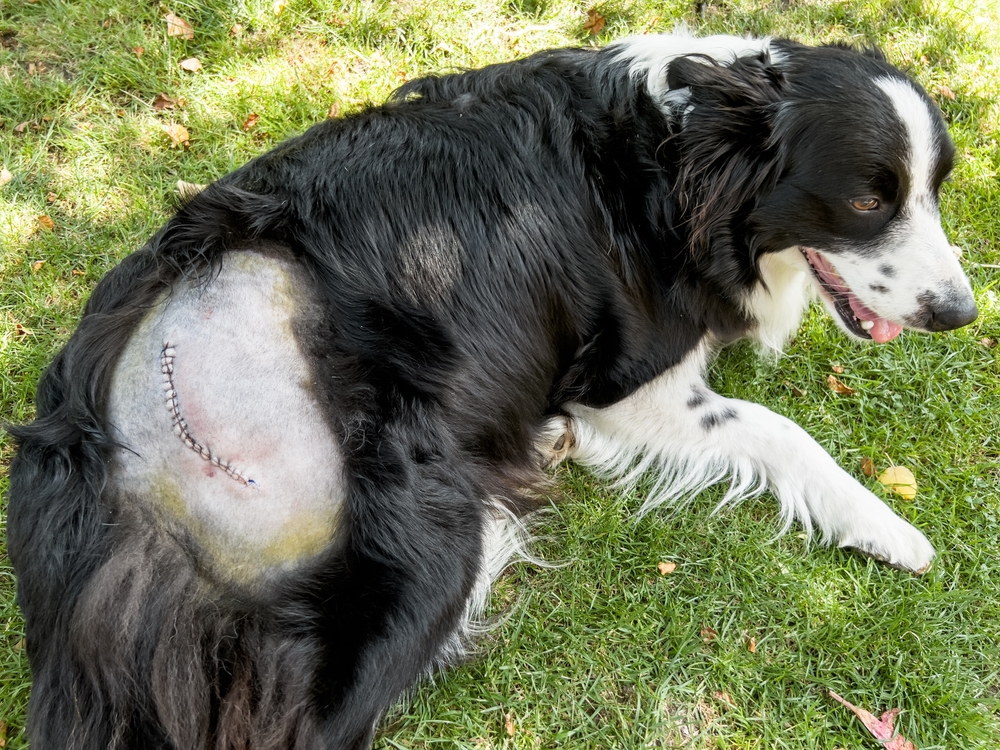Click to Skip Ahead
Vitamins are essential to the overall health of people: they help fight infections, metabolize food, heal wounds, and regulate hormones. But what about their role in dogs? Though not often spoken of, they are just as important in our canine friends. This article will focus on Vitamin B1, also known as thiamine. Inadequate thiamine in the body, termed thiamine deficiency, can cause serious neurological issues in dogs.
This article will delve into thiamine deficiency—what it is and what causes it, but, just as importantly, what signs you should be looking out for.
What is Thiamine?
Thiamine is a water-soluble vitamin that plays a crucial role in carbohydrate metabolism. Carbohydrates are a macronutrient that provide energy and other health benefits. In dogs, they are also the main source of dietary fiber. Dogs are not able to synthesize thiamine. This means that it must be obtained from the diet. Most dogs fed a commercial or store-bought pet food will receive adequate dietary thiamine, and, therefore, are very unlikely to develop thiamine deficiency.

What Causes Thiamine Deficiency?
- Dogs fed a diet without enough thiamine, such as vegetarian diets.
- Dogs fed raw fish or shellfish diets. These foods contain enzymes that break down thiamine in the body.
- Dogs fed overly-heated food. Thiamine is heat-sensitive, so is easily destroyed when food is cooked.
- Dogs fed treats or diets preserved with Sulphur dioxide.
Signs to Watch for
Thiamine deficiency can occur in any breed of dog, at any age. Most of the signs of thiamine deficiency in dogs are attributed to the forebrain. Below are the seven most common signs of thiamine deficiency:
1. Lethargy
Of course, lethargy is seen with a vast number of diseases in dogs, not only thiamine deficiency. Reduced energy levels and a dull or quiet demeanor are early signs of thiamine deficiency.

2. Reduced Appetite
This is similar to lethargy—as dogs don’t feel well, they become less interested in eating. This also occurs relatively early with thiamine deficiency. Loss of appetite can be seen with a number of health issues in dogs.
3. Weight Loss
Weight loss occurs days to weeks after thiamine deficiency first develops. This is due to reduced absorption of carbohydrates (energy), decreased food intake (loss of appetite), and increased basal energy expenditure.
3. Vomiting and Diarrhea
Vomiting and diarrhea are non-specific gastrointestinal signs in dogs with thiamine deficiency. Usually, the vomiting and diarrhea are not severe, but “wax and wane”, and fail to resolve without increasing thiamine intake.

4. Weakness
Weight loss and reduced muscle mass will lead to weakness in dogs with thiamine deficiency. Thiamine also plays a role in the conduction of nerves through the body, which tells the muscles what to do. Without this, muscle function also becomes impaired. More specifically, weakness appears as the inability to walk or support weight and muscle tremors.
5. Seizures
Seizures occur when thiamine deficiency has been present for a long time, indicating that the problem has become severe. Seizures occur when the function of the brain (in particular, the forebrain) has become impaired. Seizures appear as loss of consciousness, with alternating stiffening and jerking of the legs, and often urination/defecation.
6. Coma
Coma is life-threatening. This is seen with the most severe and untreated cases of thiamine deficiency in dogs. Coma is a prolonged period of unconsciousness and can lead to death.
Is your dog presenting any of these signs? Talk with one of our experts here:
To talk to a vet online now, click on the image or button below:
Summary
Thiamine deficiency is rare in dogs. Its occurrence can be prevented by feeding commercial dog foods with adequate thiamine and avoiding raw-fish diets. If you are unsure if your dog’s diet has enough thiamine, don’t hesitate to contact a veterinarian or pet nutritionist.
Although the early signs of thiamine deficiency are mild and not life-threatening, the neurological signs that occur later in the disease process are very concerning. This emphasizes the importance of seeking veterinary help early—as soon as you notice that your dog is unwell. Most cases can be diagnosed early based on dietary history, physical examination findings, and blood tests.
Featured Image Credit: luchschenF, Shutterstock












